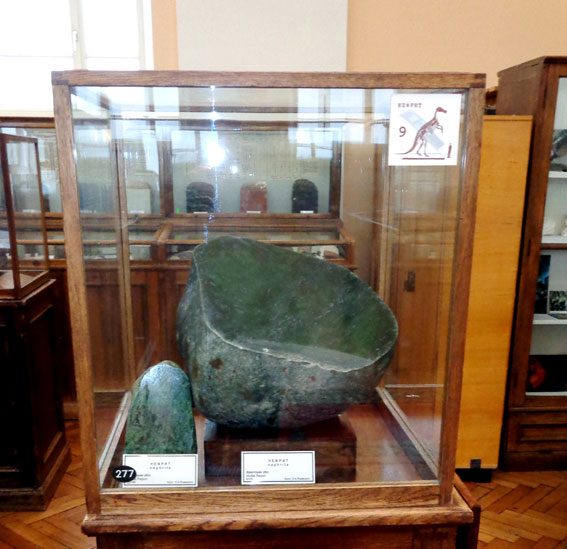Nephrite is a rock composed of interlaced, like wool in felt, but much thinner fibers of minerals, intermediate in composition between white tremolite and green actinolite – varieties of amphibole. Nephrite got its name from the Greek word “νεφρός” – “kidney” because nephrite pebbles outwardly resemble this organ. Hence, apparently, there was a belief that nephrite cures kidney diseases.
Depending on the composition (primarily on the iron content), the stone can be either white or completely black, but various shades of green predominate.
The hardness of nephrite (Mohs hardness scale 5.5-6) is relatively low, but the tangled fine-fiber texture gives it a completely unique strength, exceeding that of steel.
The amazing properties of this stone were used by primitive people, and they made axes, knives, arrowheads, and spearheads from it.
Nephrite is considered the national stone of China, where at all times it was highly valued. There were times when plaques carved from it were in circulation on a par with coins. Nephrite plates served as a passport for the emperor's missionaries, and nephrite beads faced with gold adorned the clothes of the highest Chinese dignitaries, mandarins.
A field marshal's baton, presented by the Chinese embassy to Emperor Nicholas II in 1895, was also made of nephrite in a gold frame.
